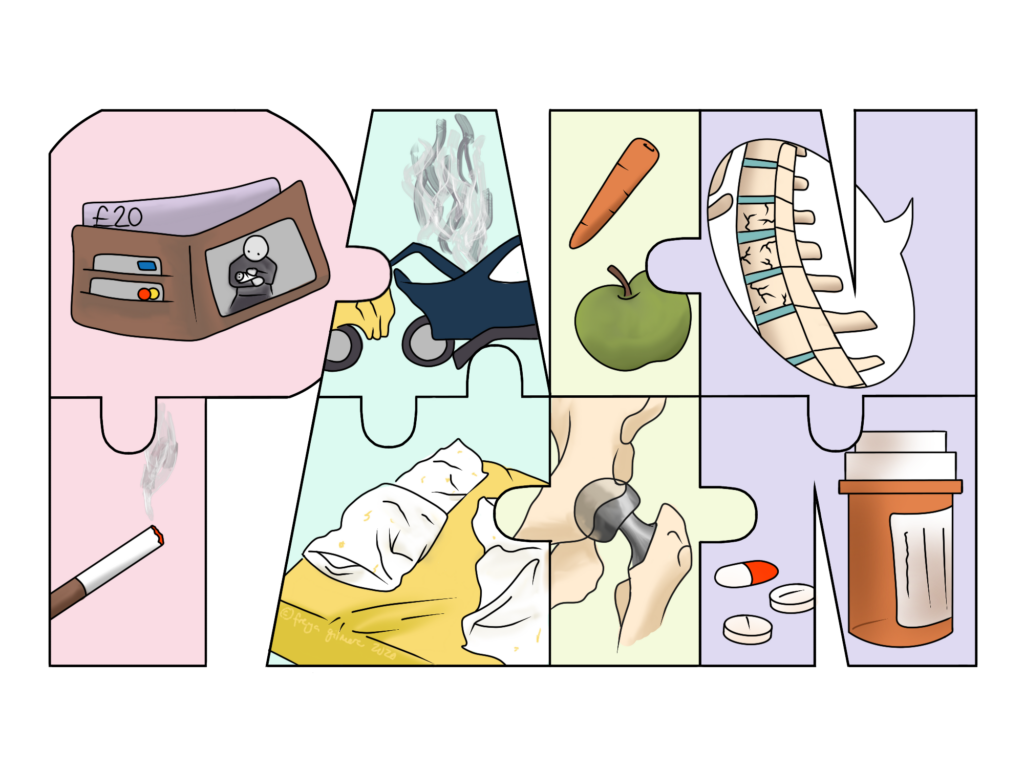Chronic pain is defined as pain that has continued for 6 months or more. It can be broken down into two types: primary and secondary chronic pain.
Primary Chronic Pain
Primary pain exists without, or after resolution of, another condition. For example, a back injury might cause the expected pain initially, but after the injury resolves the pain might continue. The reasons behind this continued pain are often numerous. They might be boiled down to three main areas: in the BioPsychoSocial model (BPS). Biological factors include the injury itself, other mechanical problems that might hinder recovery, and general tissue health. Psychology includes beliefs about the pain, like whether the pain will cause disability or limit your life. Social factors cover things like the impact of the pain on relationships, work, and self worth. The good news is that this means some talking therapies can have a very quick impact on pain levels. Support groups can also be helpful.
Functional pain conditions like fibromyalgia and CRPS are considered primary. “Functional” here means that there are no structural findings on investigations to explain the pain. With these conditions, you may suffer from both an increased sensitivity to painful and non-painful stimuli. So a small knock to the painful area could be agonising, as could the feeling of bedsheets on the skin.
Secondary Chronic Pain
When pain exists for beyond six months due to another ongoing condition, like osteoarthritis, it is considered secondary. This type is less likely to become complex than primary, but there still may be some sensitisation.
Typically, our primary focus with secondary chronic pain would be to manage the cause. With arthritis, that could mean releasing local tension to allow the joint to move better. This in turn will give the cartilage a chance to heal.
Management Strategies
Pain is a notoriously complicated and personal thing. It’s multifactorial, influenced by so much more than a physical injury alone. Talking about your pain and being understood rather than disregarded can start to ease symptoms, so do voice your issues fully during appointments. Thinking back to the BPS model, it makes sense that the more you understand about the cause of your pain, the more control you might feel over the situation. You should leave your first appointment with a good understanding of your diagnosis and what that means for you going forwards.
Your chronic neck pain might link to an X-ray that you were told showed “crumbling vertebrae”. So if someone later told you that the image painted in your mind was more negative than it should’ve been, and actually your neck is strong and stable, you’ll probably start to feel an immediate improvement. Even if that change is only small, it can snowball. Knowing that you can trust your neck again might help you to start moving normally again. This in turn will help the tissues and the neurological feedback. As everything starts to feel better, the cycle continues to improve.
Techniques to desensitise the area could involve:
- nerve stretches/flossing
- graded exposure
- TENS machine usage
For a personalised management plan that suits your specific case, you can book an appointment via the link below.
Click here to make an appointment with Beverley in Umm Suqueim

